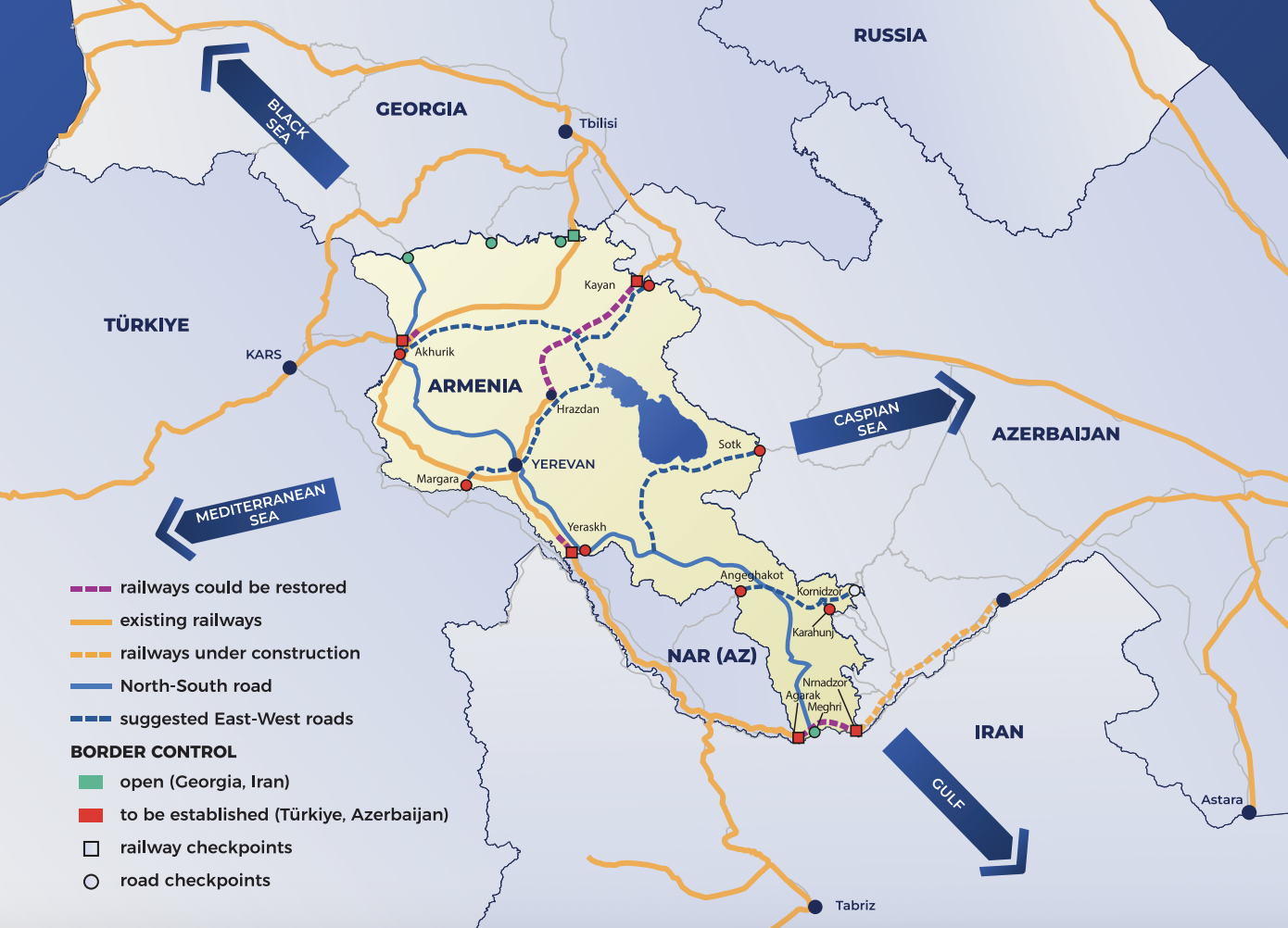- The route increases cargo mobility and reduces
transportation costs for trade between Turkey and Azerbaijan;
- The opening of the road creates potential for transit fees
and additional jobs in Armenia’s border regions;
- Infrastructure improvements may attract investment into the
transportation sector.
- The route passes through areas with historically complex
socio-political conditions, requiring careful attention to security and traffic
management;
- The economic benefits depend directly on the stability of
bilateral relations between Armenia and Azerbaijan;
- Maintaining a high level of infrastructure and logistics
services is necessary to ensure sustainable transit.
Armenia Opens Transit Route Between Azerbaijan and Turkey: A Step Toward Regional Integration

Armenia
has officially opened a transit route for cargo transportation between Turkey
and Azerbaijan through its territory. The route passes through Margara,
Yeghegnadzor, Sisian, and Goris. The first cargo transported along the new
route was Kazakh wheat.
The opening of the route comes against the backdrop of an
ongoing normalization process between Azerbaijan and Armenia. Until now,
transit between Turkey and Azerbaijan through Armenian territory had been
limited due to political and territorial disputes, with transportation mainly
relying on alternative routes through Iran or Georgia.
Notably, the opening of the route was coordinated with
third countries, including Kazakhstan, which used this path to transport
agricultural products. This highlights Armenia’s growing role as a logistics
hub in the South Caucasus region.
From a political perspective, the opening of the transit
route signals Yerevan’s readiness for closer engagement with neighboring
countries and a reduction in regional tensions. For Armenia, it represents a
step toward demonstrating good-neighborly relations and strengthening the
country’s image as a reliable partner in logistics and trade.
The economic impact is also significant:
Despite the obvious advantages, certain risks remain:
The opening of the route could be the first step toward a
broader integration of South Caucasus transportation networks and an increase
in regional trade. In the medium term, this development creates opportunities
for joint projects among countries in the region and attracts international
investment in infrastructure.
Thus, Armenia’s decision to open the transit route demonstrates a commitment to pragmatic, economically-oriented cooperation with its neighbors and opens new prospects for regional stability and economic development.
 Latest news
Latest news Latest news
Latest newsRussia Responds to New Western Sanctions: Moscow Declares Readiness for Prolonged Pressure
24.Oct.2025
Pashinyan: Armenia, Azerbaijan, and Georgia should use global attention to turn the South Caucasus into a key transit hub
23.Oct.2025
Without Russia: The Armenian-Azerbaijani Agenda Takes on a New Dimension
22.Oct.2025
Between a Rock and a Hard Place: The Political Situation Forces Netanyahu into a Difficult Choice
21.Oct.2025
Serbia’s European Integration: Prospects and Obstacles
21.Oct.2025
Ukrainian Drones Set Fire to Russia’s Largest Gas Plant, Gas Intake from Kazakhstan Suspended
20.Oct.2025
Trump and Zelensky in Washington: The Return of “Hardline Support” Policy
19.Oct.2025
Activist Margretta Mirzoyan on the Political Mood in Armenia
18.Oct.2025
Trump and Putin Prepare to Meet Ahead of Zelensky’s White House Visit: A New Phase of Diplomacy or Pressure on Kyiv?
17.Oct.2025
A Shadow over the Russian-Azerbaijani Thaw: What Lies Behind the Arrest of Former Presidential Chief of Staff Ramiz Mehdiyev?
16.Oct.2025

 27 Oct 2025
27 Oct 2025








